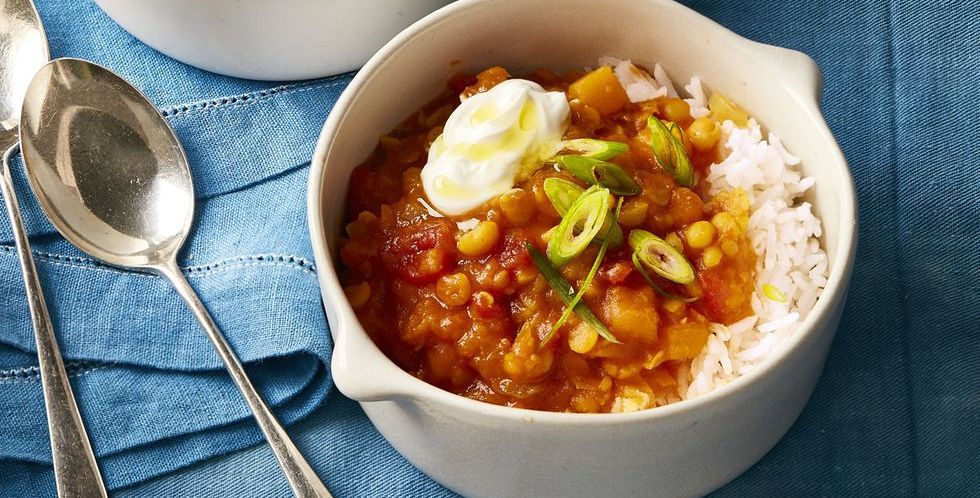How To Prepare Heart-Healthy Meals For Hypertension Control?

Hypertension, or high blood pressure, is a prevalent health concern that affects a significant portion of the population. It is associated with an increased risk of cardiovascular diseases, such as heart attack and stroke. Adopting a heart-healthy diet can play a crucial role in managing hypertension and reducing associated risks.
This article aims to provide practical guidance on preparing heart-healthy meals for hypertension control. By understanding the importance of a heart-healthy diet and incorporating specific food groups into meals, individuals can make informed choices that promote cardiovascular health. The inclusion of fruits, vegetables, lean proteins, healthy fats, and whole grains, along with the limitation of sodium intake, are key components of a heart-healthy diet.
Additionally, using herbs and spices to enhance flavor and planning and preparing meals in advance can contribute to successful adherence to this dietary approach. This article will offer evidence-based recommendations and practical tips to empower individuals in their pursuit of heart-healthy meals for hypertension control.
Key Takeaways
- Meal planning and preparation is crucial for individuals with hypertension as it helps avoid impulsive food choices and unhealthy fast-food options.
- A heart-healthy diet for hypertension control should include fruits, vegetables, whole grains, lean proteins, low-fat dairy products, and foods rich in potassium and omega-3 fatty acids.
- Lifestyle factors such as limiting alcohol consumption, staying hydrated, engaging in regular physical activity, maintaining a healthy weight, and managing stress levels are important for hypertension control.
- Making gradual and sustainable changes to dietary habits, understanding nutrition labels, and seeking support from others are key for long-term success in controlling hypertension through heart-healthy meals.
Understand the Importance of a Heart-Healthy Diet
Understanding the significance of adhering to a heart-healthy diet is crucial for individuals seeking to effectively manage their hypertension. A heart-healthy diet plays a vital role in reducing the risk of cardiovascular diseases, including high blood pressure.
One key aspect of such a diet is ensuring proper hydration, as it helps maintain blood volume and prevent dehydration, which can contribute to elevated blood pressure levels.
Additionally, a heart-healthy diet emphasizes the consumption of nutrient-rich foods, such as fruits, vegetables, whole grains, and lean proteins, while limiting the intake of saturated and trans fats, sodium, and added sugars.
Regular physical exercise also complements a heart-healthy diet by promoting weight loss, improving blood circulation, and reducing stress levels, all of which contribute to better blood pressure control.
Therefore, understanding the importance of a heart-healthy diet, along with maintaining hydration and engaging in regular exercise, is essential for effectively managing hypertension.
Incorporate Plenty of Fruits and Vegetables into Your Meals
Incorporating an abundance of fresh, vibrant produce into one’s diet can enhance the nutritional value and visual appeal of meals designed to support cardiovascular health.
When it comes to incorporating fruits and vegetables into heart-healthy meals, there are numerous creative recipes and meal prepping tips available.
One option is to experiment with unique fruit and vegetable combinations to create flavorful salads or side dishes.
Another idea is to incorporate fruits and vegetables into smoothies or juices, providing a refreshing and nutritious beverage.
Additionally, meal prepping can be a helpful strategy to ensure that fruits and vegetables are readily available for consumption.
By washing, chopping, and portioning fruits and vegetables ahead of time, individuals can easily incorporate them into meals throughout the week.
Overall, incorporating fruits and vegetables into heart-healthy meals can be an enjoyable and beneficial way to support cardiovascular health.
Choose Lean Proteins for a Balanced Diet
Opting for lean proteins is crucial for maintaining a well-balanced diet that promotes cardiovascular health. When it comes to choosing protein sources, individuals with hypertension should aim for lean options that are low in saturated fats and cholesterol.
Lean protein alternatives include poultry without the skin, fish, legumes, and low-fat dairy products. These options are rich in essential nutrients such as vitamins, minerals, and omega-3 fatty acids, which have been linked to numerous cardiovascular benefits.
Additionally, vegetarian protein sources like tofu, tempeh, and seitan can be incorporated into meals to provide a healthy alternative for those who follow a plant-based diet. These vegetarian options not only offer protein but also contain other beneficial nutrients such as fiber and antioxidants.
By selecting lean proteins, individuals can ensure a heart-healthy diet that supports hypertension control.
Use Healthy Fats in Your Cooking
Using healthy fats in cooking is an essential aspect of maintaining a balanced diet that supports cardiovascular health. When it comes to preparing heart-healthy meals for hypertension control, it is important to choose fats that are beneficial for the body.
Healthy fats, such as monounsaturated and polyunsaturated fats, can help reduce bad cholesterol levels and lower the risk of heart disease. These fats can be incorporated into recipes by using alternatives to unhealthy fats. For example, olive oil, canola oil, and avocado oil can be used instead of butter or margarine.
Nuts, seeds, and fatty fish like salmon and tuna are also excellent sources of healthy fats. By using these alternatives, individuals can enjoy flavorful and satisfying meals while promoting heart health.
Limit Sodium Intake for Blood Pressure Control
Reducing sodium intake is crucial for maintaining optimal blood pressure levels and promoting overall cardiovascular health. Excessive sodium consumption has been linked to hypertension, a major risk factor for heart disease.
In order to prepare heart-healthy meals for hypertension control, it is important to limit the amount of sodium in your diet. One way to achieve this is by using sodium alternatives and low sodium seasoning options. Sodium alternatives, such as potassium chloride, can be used as a substitute for table salt.
Additionally, there are various low sodium seasoning options available in the market, which can add flavor to your dishes without increasing sodium levels. These options include herbs, spices, and vinegar-based dressings.
By incorporating these alternatives into your cooking, you can effectively limit sodium intake while still enjoying flavorful meals that are beneficial for your cardiovascular health.
Opt for Whole Grains for Added Nutritional Benefits
Whole grains offer a multitude of nutritional benefits, making them a valuable addition to any diet. Incorporating whole grain options into a heart-healthy meal plan can help individuals with hypertension maintain better control over their blood pressure levels. Whole grains, such as brown rice, quinoa, and whole wheat bread, are rich in fiber, which plays a crucial role in heart health.
The importance of fiber in the diet cannot be overstated. Firstly, fiber aids in digestion and helps regulate bowel movements, reducing the risk of constipation. Secondly, it helps to lower cholesterol levels by binding to cholesterol, preventing its absorption into the bloodstream. Lastly, fiber can help control blood sugar levels by slowing down the absorption of glucose, which is particularly important for individuals with diabetes.
Incorporating whole grains into meals is as simple as swapping refined grains for their whole grain counterparts. This can be done by choosing whole grain bread instead of white bread or opting for brown rice instead of white rice.
By making these small changes, individuals can enjoy the nutritional benefits of whole grains and contribute to better heart health.
Experiment with Herbs and Spices for Flavorful Meals
Experimenting with a variety of herbs and spices can add a burst of vibrant flavors to meals, transforming them into culinary delights that tantalize the taste buds. When it comes to preparing heart-healthy meals for hypertension control, herbs and spices are a valuable tool. Experimenting with different flavor combinations can help individuals reduce their sodium intake without sacrificing taste.
By using herbs and spices, individuals can rely less on salt for flavoring their meals, which is beneficial for managing hypertension. Additionally, herbs and spices are rich in antioxidants, which have been shown to have protective effects on the cardiovascular system. Incorporating a wide range of herbs and spices into quick and easy heart-healthy recipes can not only enhance the taste, but also contribute to overall cardiovascular health.
Plan and Prepare Your Meals in Advance for Success
Planning and organizing meals in advance can be an effective strategy for achieving dietary success and maintaining a balanced and nutritious diet. Meal planning allows individuals to make thoughtful choices about their food intake, ensuring that they consume heart-healthy meals that are low in sodium and saturated fats.
By planning meals in advance, individuals can also save time and reduce stress during meal preparation. Time management plays a crucial role in meal planning as it allows individuals to allocate time for grocery shopping, ingredient preparation, and cooking.
Additionally, planning meals in advance helps individuals avoid impulsive food choices or relying on unhealthy fast-food options. By taking the time to plan and prepare meals in advance, individuals can ensure that they are consistently consuming heart-healthy meals, promoting hypertension control, and overall cardiovascular health.
Frequently Asked Questions
How can I incorporate more fruits and vegetables into my meals?
To incorporate more fruits and vegetables into meals, one can opt for creative ways such as adding vegetables to omelets, smoothies, and stir-fries, or incorporating fruits into salads, yogurt, and whole grain cereal.
What are some lean proteins that I can include in my diet?
Plant based proteins such as legumes, tofu, tempeh, and quinoa are excellent alternatives to traditional animal-based proteins. These sources are low in saturated fat and can be incorporated into a heart-healthy diet for hypertension control.
What are some healthy fats that I can use in my cooking?
Some healthy fats that can be used in cooking as alternatives to unhealthy fats include avocado, olive oil, nuts, seeds, and fatty fish like salmon. These fats have been shown to have beneficial effects on heart health.
How can I reduce my sodium intake for better blood pressure control?
To reduce sodium intake for better blood pressure control, one can opt for healthy substitutes. These substitutes can include using herbs and spices to enhance flavor, choosing fresh, unprocessed foods, and reading food labels to identify high sodium content.
What are the nutritional benefits of whole grains and how can I include them in my meals?
Whole grains offer numerous nutritional benefits, including high fiber content, vitamins, minerals, and antioxidants. Creative ways to incorporate them into meals include swapping refined grains with whole grain options, such as using whole wheat bread or brown rice.








